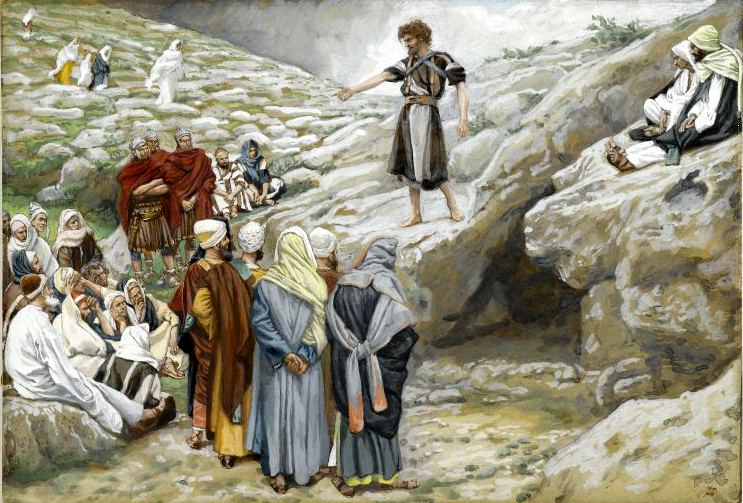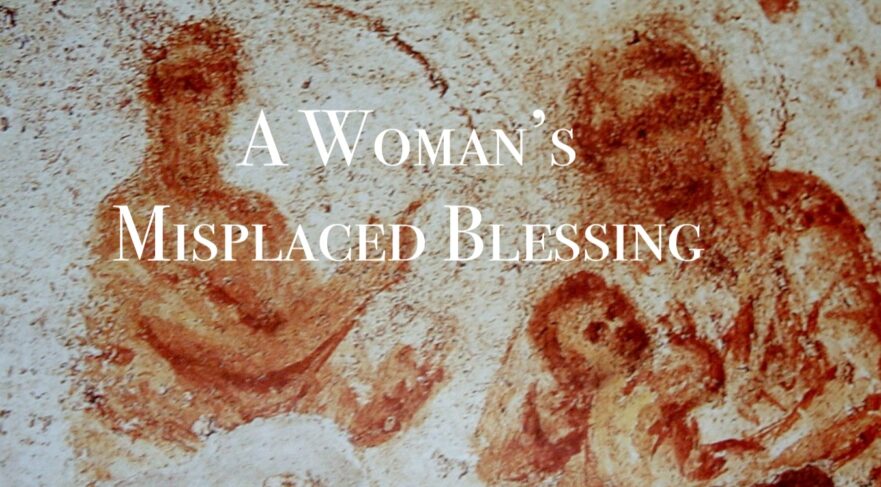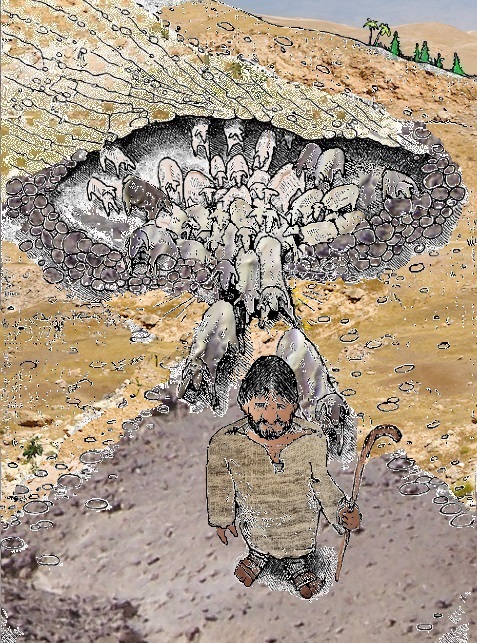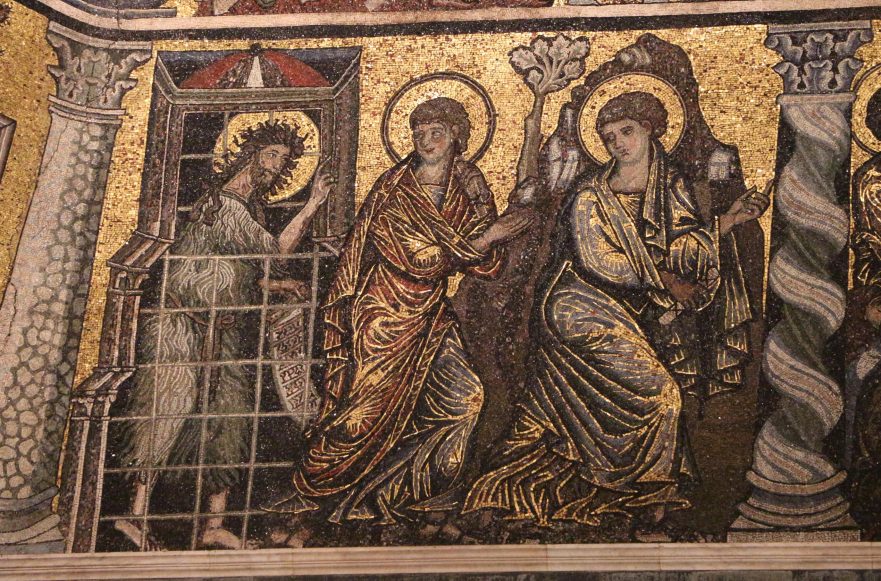The words of the heavenly voice that spoke at Jesus’ immersion foreshadowed the trajectory of Jesus’ career.
Yohanan the Immerser’s Execution

The story of John the Baptist’s martyrdom was rich with allusions to stories from the Hebrew Scriptures.
Yohanan the Immerser’s Eschatological Discourse

John the Baptist anticipated the coming of an Elijah-like priestly messiah who would purify the Temple on an eschatological Day of Atonement.
Yohanan the Immerser’s Exhortations

In Yohanan the Immerser’s Exhortations John the Baptist instructs his audience how they are to behave in order to bear the fruits of repentance.
Yohanan the Immerser Demands Repentance

In Yohanan the Immerser Demands Repentance John the Baptist challenges his audience, which had gone through all the trouble of going out to the Jordan River to receive his baptism, to accept his even more important advice: to repent of their evil deeds and imitate the faithfulness of Abraham their father.
A Voice Crying

An examination of the Jewish setting of John the Baptist’s proclamation of an immersion of repentance for the release of Israel’s sin indebtedness.
Darnel Among the Wheat Parable

Is the Darnel Among the Wheat parable an allegory about eschatological events, or a lesson about God’s character?
A Woman’s Misplaced Blessing

When a woman in the crowd praised Jesus’ person, he redirected her attention to the Kingdom of Heaven, which is realized through the doing of God’s word.
Yeshua, His Mother and Brothers

Did Jesus reject his natural family in favor of a spiritual kinship, or did he pay Mary and his brothers the highest possible compliment?
Four Soils Interpretation

In the Four Soils interpretation Jesus explained the meaning of the imagery in the Four Soils parable.
Four Soils Parable

By not revealing what the Four Soils parable was about until its dramatic conclusion Jesus drew in his audience and held their attention, making them the very thing the parable urged them to be: good listeners.
The Kingdom of Heaven Is Increasing

An investigation of the possible Hebrew background of one of Jesus’ most difficult sayings.
Yohanan the Immerser’s Question

When John the Baptist asked Jesus, “Are you the Coming One?” did Jesus reply, “Yes, I am” or “No, I’m not”?
Yeshua’s Thanksgiving Hymn

In Yeshua’s Thanksgiving Hymn the Holy Spirit inspires Jesus to utter an Essene-style hymn that expresses gratitude for the divine revelation that was being disclosed to his followers.
A Statistical Approach to the Synoptic Problem: Part 4—Non-Linear Hypotheses

In Part Four of his series, “A Statistical Approach to the Synoptic Problem,” Halvor Ronning compares Lindsey’s theory of Lukan Priority to alternative solutions to the Synoptic Problem.
The Programmatic Opening of Jesus’ Biography as a Reflection of Contemporaneous Jewish Messianic Ideas

In this study Professor Ruzer suggests that there was a broader first-century Jewish context behind the narrative strategies employed in Mark’s prologue to Jesus’ messianic biography. On the other hand, he also demonstrates that Mark 1:9-11 can be used to recover an early phase of a pattern of messianic belief, seemingly shared by wider Judaism, that continued into the rabbinic period. In other words, New Testament evidence can be an important witness to broader trajectories in early Jewish messianic beliefs.
Sending the Twelve: Conduct on the Road

In this segment of the LOY commentary David Bivin and Joshua Tilton consider the command to avoid Gentiles and Samaritans and the prohibitions against bringing travel gear for the apostles’ journey.


